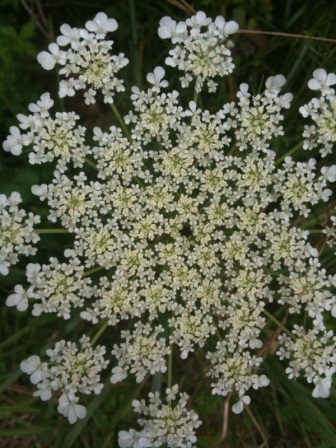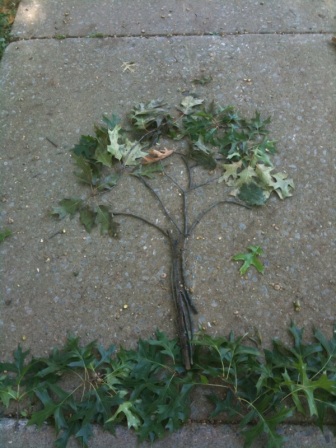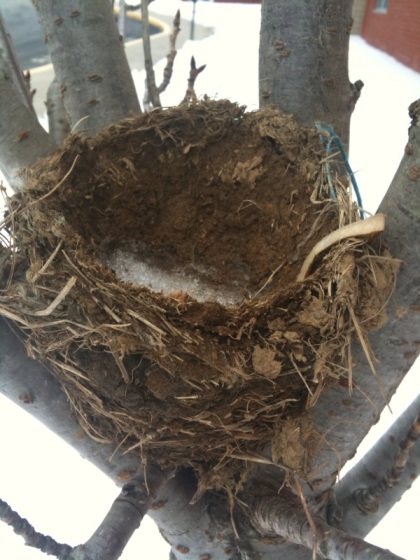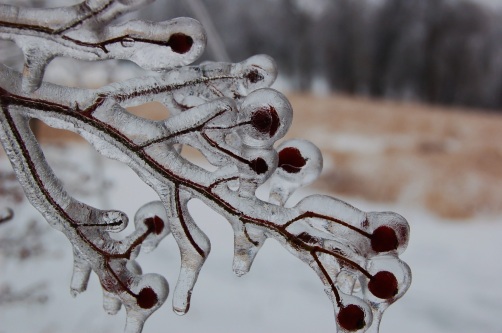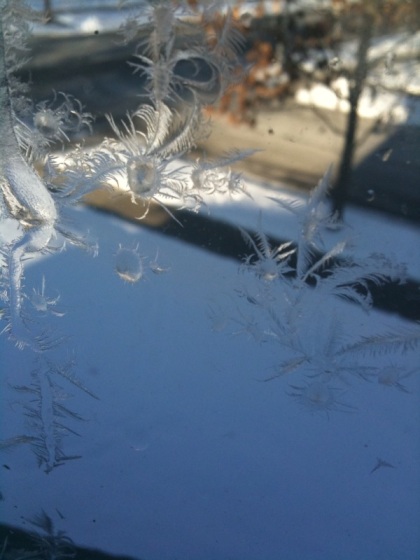.
When I am not writing this blog or struggling to make myself get out into the snow, I am an environmental education coordinator for a local school district. I work with K – 12 grade classes, creating outdoor activities that fit with class curriculum and PSSA (Pennsylvania System of School Assessment) exam standards. My goals are always two-fold: 1. to have students learn something about the topic at hand, and 2. to give them an experience with nature that will increase their comfort in being outside and turn nature into a “friend.”
Before this position I spent time as a museum guide in Philadelphia, a park guide at Arches National Park in Utah, a nature camp leader, and as a “content expert” for high school geoscience teachers at a conference in Pennsylvania. Each of these brought their own set of challenges, rewards, and lessons, and each has helped me to grow as a person and educator. I am always changing based on new experiences, but here are the ten most important lessons for teaching environmental education that I have learned so far!
________________________________________________________________________
.
1. Don’t depend on the teacher to get control of the class for you.
This is sometimes hard to do, because you don’t want to come into a new place and correct someone elses’ kids. I am not saying you should go overboard with this, but sometimes teachers are going to welcome the brief respite from teaching and take the time to grade papers, plan the next activity, etc. They will not always be available to step in for you, or step in at the time you need it. The ability to gently bring a group back together when they are not listening on your own is very important!
.
2. You don’t know what else these kids are dealing with, so be compassionate!
You can’t let kids walk all over you, but you will often find that the kid who is having the hardest time sitting still or listening to directions is also struggling in other ways. I once told a kindergarten class to show the work we did to their families when they got home, and the student who had been the hardest to work with said quietly, “My dad only calls me bad names.” A 4th grade student in a writing exercise about a favorite place in nature wrote about a tree in his backyard that was his only friend, who he could “tell all his secrets to.” The list goes on. Some kids are struggling with very difficult things, and you won’t always know what they are.
Along these same lines I am careful to never address letters home to ‘parents,’ and don’t use the word ‘parents’ to students–I only ever say ‘families.’ I am also careful to say “where you live” instead of house. It requires less effort than it might seem–it quickly became a habit for me and now I don’t even have to think about it anymore. It might seem extreme at first to worry about this stuff, but it is a small change that might make a big difference.
.
3. Instead of being angry at a “difficult” student, invest extra time into that student or get her or him to help you with an activity.
This is one of the very best pieces of teaching advice I ever got. If a teacher tells you in advance that one of their students might be difficult, set up a positive relationship with them as soon as possible. Your initial reaction to hearing someone is difficult might be to assert dominance and show them you can’t be messed with. Resist this urge! Instead, ask them to help you set up an activity or ask for their opinion on a topic. If you discover that a certain student is causing problems in the middle of the activity, use any down time to see how that child is doing, what they find exciting about the class, etc.
Shortly after I first got this advice I had a 3rd grade student who had a really hard time working in a group and following directions. During the lunch break I noticed him looking at a plant and went over to talk to him about it. After I showed interest in what he was thinking, he was much more willing to work with me in the second half of the day. It was amazing what a difference this minimal effort made!
.
4. Kids will be excited if you are excited!
And they will be bored if you are bored. One of the best tools you have for reaching kids is your passion for a subject. It is contagious, and will keep kids listening and wanting to learn more. Don’t ever forget that you got into this field because you love the topic, and you want to share that love with others. You are making a difference in ways you won’t ever even know about!
.
5. Some students you work with will have Asperger’s syndrome, sensory processing disorder, attention deficit disorder, anxiety, Down syndrome, etc. Sometimes you will know about it and sometimes you won’t.
In my opinion, the more you can learn about these different topics the better you will be at working with ALL students. This is a bit like #2, in that if you are not the regular teacher you never really know what an individual student is dealing with. I started thinking about this a lot recently after watching the documentary “I can’t do this but I CAN do that: A film for families about learning differences.” I highly recommend watching it if you have a chance! One of the stories that especially stuck with me is of a boy with auditory processing disorder. He had a very difficult time understanding what the teacher was saying over other class noises, and as a result was always in trouble for “not paying attention.” I think back in horror now to every time I ever said to a student “Well, what did I just explain to the class?” After seeing this film I started asking myself, “Why do I care about explaining something a second time? What is the big deal to me?” It is possible some people could argue I am being ‘too easy’ on the kids, but I have made the decision that my most important goal is to get kids excited about nature and science while keeping everyone safe. This means that I will stop an individual who is disrupting the class or calm a group down that has gotten out of hand, but I don’t feel the need to punish a kid for being distracted when I first explained directions. If the regular teacher wants to do that, I will leave it up to them, but it isn’t my job in the few hours I see a group.
.
6. Make sure students really know they can ask you questions, and be willing to cover less than you thought you would if students are confused.
I make sure to ask students if they have any questions often, and at times explicitly say, “Please tell me if you don’t understand this topic, I don’t mind and I am happy to explain it in a different way.” Sometimes you won’t find out until the very end of a lesson that students have no idea what you are talking about. This is okay! Remember that your goal is NOT to just get through all of your material, but to impart knowledge to other beings. It is okay if you can’t cover everything you hoped if students really understand what you do cover.
One of the more difficult sides of this is that you really do need to explain things in a different way if kids aren’t getting you. This can be difficult, but the better you know your material the easier it will be. I once had a math class in college where the professor would answer my question by repeating the exact same sentences and examples he used the first time. I really hated this, and it did nothing whatsoever to help my problems with math. It is very frustrating to be willing to learn in spite of struggling, and not have the instructor meet you half way.
.
7. Be willing to change your plans completely.
It will rain. The teacher will forget you are coming that day. The students will remember the golden retriever they saw at the farm above every other thing they learned that day. You will teach a whole activity and find out at the end that you were accidentally using a word beyond their vocabulary but nobody told you. Most importantly, sometimes you will just feel that things aren’t going very well. When you get this feeling, CHANGE YOUR PLANS! Do not continue to teach to blank faces, do not cling desperately to your notes as you go down with the ship. You have to be willing to adapt to each individual class, their interests, and their needs. This will be difficult and scary at first but will get easier with time, and is one of the most important things you can do to be an effective educator.
.
8. Don’t be afraid to admit you don’t know something!
If you don’t know something and make up an answer anyway, they will know, and they will not listen to anything else you say. This advice was given to me when I was working as a park guide in Arches National Park, and I have stuck by it ever since. The most important part about saying you don’t know something, though, is to tell students/groups that you will find out the answer and get back to them, and then actually do it. More than a few times I have e-mailed a teacher after an activity with information that the students wanted to know that I just didn’t. Saying you don’t know something will also seem scary at first, but it is really important. If you are willing to say what you don’t know, people will trust what you DO know even more, and students will see that the learning process continues even in adulthood.
.
9. Spend a few seconds before each activity getting mentally ready.
This is probably one of the biggest “little” things you can do. Spending a short time before an activity reminding yourself of the topic, why you like it, and to be “centered” will make you more confident and ready to deal with whatever comes next. I do this a couple of different ways–sometimes I run through what I want to say again in my head, sometimes I center myself by thinking about all of the atoms in my body with their electrons spinning around (this is a weird thing I have done for a while–don’t know quite where it came from!), and sometimes I just think about how cool the science topic I am about to teach is! I find taking this time really helps with #4, and conveying my excitement and interest to the students.
.
10. Reflect, reflect, reflect!
The best way to get better is by doing, making some good decisions, making some bad decisions, and then reflecting on why one was good and one was bad. Sometimes you will have an amazing day with kids who are excited and asking great questions, and sometimes you will wonder if you made any impact at all. You need to figure out what went well! I try to do this immediately, while I am driving home from an activity (although sometimes I just listen to music and sing along loudly). If you like writing, journaling can be another good way to do this. Other times I reflect just by talking about my day to someone. Explaining things out loud to another person helps me recognize patterns or reasons that I didn’t see at first.
I’ve also started sending out brief 5 question surveys to teachers after activities. I made the survey for free on http://www.surveymonkey.com, and ask questions like “Q: Do you feel students were engaged in this activity? A: Yes, the entire time. B. Yes, for part of the time. C. No, they were not engaged,” “What was the best part of this activity?” and “What would you like to see in the future?” The teachers don’t always have time to answer but the information I do get back is well worth the effort.
Reflecting will also help you develop your own personal tips and guidelines. Five years ago I was afraid to speak up and correct a class if their teacher wasn’t doing it. One year ago I had never thought about how saying “parents” might affect kids who lived with their grandparents, a family friend, or a single parent. 6 months ago I had never even heard of sensory processing disorder! I can’t even imagine what kind of things I will learn in the next activity, the next 6 months, the next years of my life. But I do know that I will find out, thanks to reflection and the help of those around me.
______________________________________________________________________________
So how about you, readers? What have you learned from your time in the classroom or outside, with kids or adults? How do you stay excited and interested in your topic? How do you convey that to others? What kinds of life experiences have affected the way you interact with others?
I hope you will leave some of your experiences and tips in the comments section! There is such a wealth of personal experience out there, and we are always better for sharing. I would love to learn from you!



